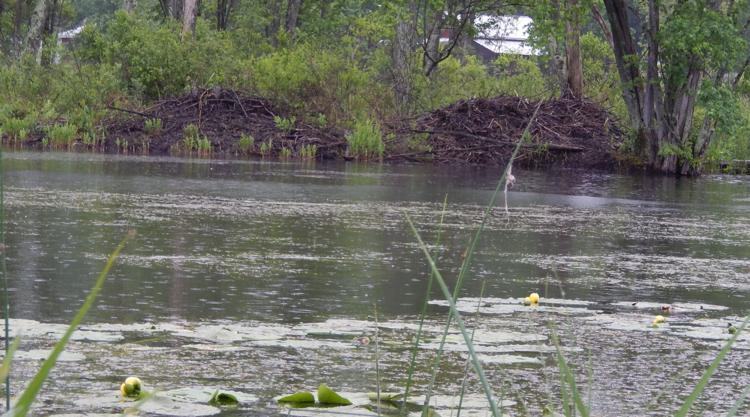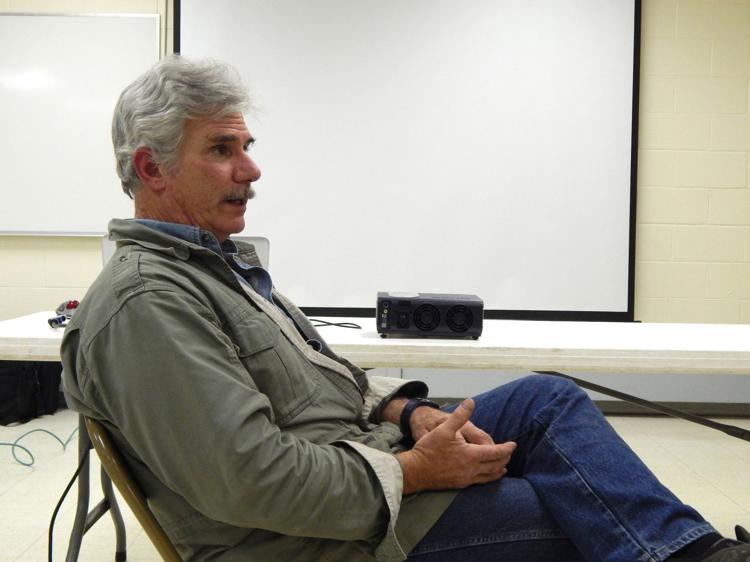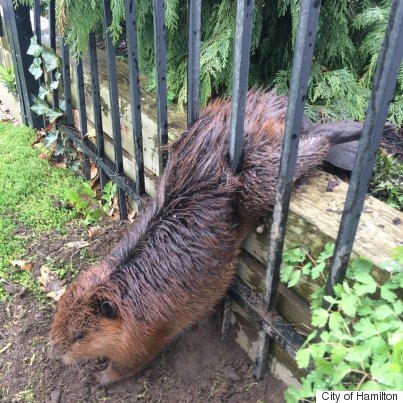Why is it that folks in the county library complain about having nothing to read? I guess for the same reason your teenager opens the fridge and says there’s nothing to eat. Certainly the state of New York has blinders on when it comes to solving beaver problems, other wise they would have called on Beavers: Wetlands and Wildlife years ago. The answer to their question is a whopping 130 miles away.
Spencer Trying to Fix Nuisance Beaver Problem in Nichols Pond
 As the Spencer Village Board of Trustees continues to ponder the beaver problem that has been plaguing Nichols Pond, they sought input from expert Scott MacDonald, who has had to deal with the industrious critters in his capacity as executive director of the Waterman Conservation Education Center in Appalachin.
As the Spencer Village Board of Trustees continues to ponder the beaver problem that has been plaguing Nichols Pond, they sought input from expert Scott MacDonald, who has had to deal with the industrious critters in his capacity as executive director of the Waterman Conservation Education Center in Appalachin.
For years MacDonald has been trying to figure out the best way to curb damage by the beaver population at Brick Pond in Owego. He found an effective method, though it involved installing two bulkheads that control the water level at a cost of $80,000 taxpayers’ dollars. The Spencer Village Board is seeking a more cost-effective way to prevent damage in and around the village-owned pond.
MacDonald agreed that it was also probably a beaver that chewed through the underwater electrical line that powers the fountain in the center of the pond. Goodrich said he’s not sure whether or not the fountain will be repaired in time to turn it on this summer.
I want to meet the man who sold them the 80,000 dollar solution, because he’s a genius and should work for the federal government. Clearly no kind of flow device or beaver deceiver was ever installed because they have a crew of volunteers pulling out debris on a daily basis.
The handful of volunteers who clean the debris out of the pond’s culverts are becoming fed up, according to Goodrich. “They want to move onto other stuff,” he said of the volunteers, “but they’re so busy with the beavers they can’t do anything else.”
“I don’t blame them,” he added,” because they’re out there every day.” He said that most if not all of the volunteers are older and that the physical labor of clearing out sticks and packed mud can be hard on them.
Therefore, Goodrich said, the board needs to come up with a solution sooner rather than later. The beavers cannot be trapped and relocated because they are considered a “nuisance” species in New York State, the logic being that it’s not fair for people to release beavers elsewhere and pass on the burden to other landowners.
 Goodrich said that he is not opposed to having the beavers killed, a resolution that none of the other trustees were very enthusiastic about supporting.
Goodrich said that he is not opposed to having the beavers killed, a resolution that none of the other trustees were very enthusiastic about supporting.
Most of the trustees said they believe that if the beavers are killed another family of beavers will move in. Goodrich argued that trapping the beavers that live in the pond currently would at least give the village time to come up with an adequate solution before new ones decide to make the pond their home.
MacDonald said he considers having the family beavers killed the one “black mark” on his record as caretaker for the pond, even though it was necessary to secure the state funding necessary to save the pond after the flood.
“It was very bad,” he said. “The public got very upset about it.”
We learned so much from that incident. We still don’t have a clue how to solve beaver beaver problems.
Since that time, he has learned how to raise and lower water levels at certain parts of the pond. If he pays attention to what the beavers are up to, he can often dissuade them from building in problematic places because beavers won’t build dams where the water is not deep enough for them to float the big logs they need to start their shelter. Beavers, he told the board, do not like to drag heavy logs.
Even with the bulkheads, MacDonald said there is some manual labor involved. There’s one culvert he has to dig out himself every once in a while or it becomes a major project — over the last winter he let it go too long, he said, and a few weeks ago he had to go out in a wetsuit with a backhoe to clear the stopped-up water flow.
Some level of manual labor seems inevitable if the beavers are to stay, but Spencer Village Trustee Nicole O’Connell-Avery said that she disapproves of setting kill traps.
She said the traps would likely be set underwater and would catch the beavers by the leg, holding them until they drown. She said it sounds like an awful way to die, and questioned whether or not the traps could endanger swimmers, pets or boaters who fall overboard.
O’Connell-Avery was enthusiastic about the idea of installing heavy-duty fencing in strategic areas that would prevent the beavers from building at the pond’s intakes and outtakes. Mayor Christine Lester said she thought this was worth a try.
O’Connell-Avery also offered up the unique but untested idea of population control: catching, neutering and releasing the pond’s male beavers. O’Connell-Avery works at Cornell University, and she said she would ask around to see if her colleagues would be interested in using the pond as a case study.
Beavers live in families of eight to 10, and usually only one family will live in a body of water as small as Nichols Pond. When the family has about eight offspring, the parents kick out the two oldest, who then seek new habitats at neighboring ponds, according to MacDonald. O”Connell-Avery said that this structured family setup might make for an ideal situation in which researchers could trap the males and keep track of the results.
 When the family has about EIGHT OFF SPRING THEY KICK OUT THE TWO OLDEST? Really? And you work at Cornell? Are you the frickin’ janitor?
When the family has about EIGHT OFF SPRING THEY KICK OUT THE TWO OLDEST? Really? And you work at Cornell? Are you the frickin’ janitor?
Good lord this riles me. I’m too old for this sort of nonsense. Considering that Cornell already HIRED Mike Callahan to install a flow device, every one of these folks should know better. That was just over an entire year ago, I guess I can understand why you wouldn’t be up on such ancient history.
I guarantee you Mike didn’t charge the university 80,000 dollars for his installation, by the way. Heck even when we brought Skip Lisle 3000 miles out from VERMONT to solve our problem it didn’t cost us 80,000.
ACK! Someone get me a paper bag to breathe into. The Cornell website tells me that Nicole is a supervising vet Tech at the wildlife animal hospital at the university. She could really make this happen. We can only hope that before she picks up the scapel to neuter these beavers she cracks open a book and reads that beavers enter estrus once a year and young disperse at two years regardless of the family size. Surely she will listen to a reasonable argument?
Given Spencer’s track record so far, I’m not counting on it.
I need to calm myself by sharing the beautiful new sign that arrived yesterday for my beaver booth. Isn’t this lovely? It will hang out from my booth like one of those Ye Olde Shoppe signs!








 “It sucks, but I gotta do it,” he says. “There’s a reason I’m here doing it, but I’d rather leave them alone.” According to Brook, the city’s bill for beaver relocation since 2011 totals $15,023.03.
“It sucks, but I gotta do it,” he says. “There’s a reason I’m here doing it, but I’d rather leave them alone.” According to Brook, the city’s bill for beaver relocation since 2011 totals $15,023.03.







































